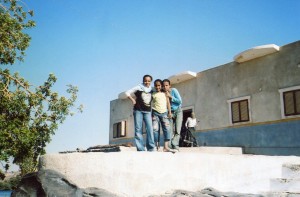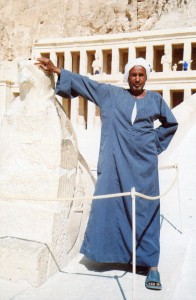Anient Egypt was more than pyramids. I found the little things under the surface as impressive.
By the time kings were building the great pyramids around 2600 BCE, artists painted people in families showing each other affection. Husbands and wives drape an elegant arm around each other and look forward with contented expressions. And no DVD and potato chips! People did like their beer though. Children sometimes hold their parents’ legs.
This is 2600 BCE–twice as old as the earliest humanistic art of some of the other great civilizations. Minoans fashioned images that were as life-affirming around 1500 BCE, but they were influenced by Egypt. After their world collapsed, Greeks didn’t attain comparable levels of humanity in their art until the Homeric texts were composed, from 800 to 650 BCE. Why was Egypt special in this regard?
In earlier posts, beginning with Origins of Ancient Egypt, we saw that Egypt was already ancient when the pyramids were built–people gathered in villages and then towns along the Nile for more than 2,000 years, and had to cooperate to take maximum advantage of the Nile’s flooding every year.
These mores were expressed in new media when Egypt organized into a large kingdom that was unified by a royal court and writing.
1. By the 5th Dynasty, wisdom literature emerged. Texts encouraged people to respect others, speak softly, and avoid gluttony and drunkenness. Wisdom literature became widespread in the Middle East, and the Old Testament’s Book of Proverbs is within this tradition. Both contain aphorisms about proper conduct (the Book of Wisdom expands this simple form into long passages about the importance of knowledge of Yahweh). Egyptian families still stress the importance of being quiet and respectful.
2. Painting and sculpture became more realistic in the 3rd and 4th dynasties, and people in the upper levels of the state’s hierarchy were shown enjoying comfortable and quiet lives with their families. Nobody parties til he pukes. People enjoy lots of food and finaries, but they’re restrained and elegant to an extent that rivaled Classical Greece’s ideals, and Islam’s stress on purity during prayer.
3. These ideals were projected into the heavens. They’re in the afterlife that people aspired for. They also demonstrate Maat–the sacred order that a working society and universe depend on.
Sadly, this beautiful view of the world has often become harmed Egyptians. Mubarak, Egypt’s recent dictator, and his cronies took advantage of a population taught to be quiet and passive for 30 years. The political analyst Thomas Friedman says Mubarak did nothing for the educational system. Friedman attended a meeting in Singapore in which governmental official obsessed over how to teach fractions to 8 year olds. He worries that after 30 years, Egypt might be hopelessly behind other countries.
Past governments also used Egypt as a breadbasket and allowed a few people to live it up, and most to struggle. Romans, Mamluk sultans, Ottomans and King Farouk are part of this unholy procession.
The very ideals that became established in ancient times are thus ambiguous. They emerged in pre-dynastic times to help people cohere. But the dynastic state unfied itself with a hierarchical court bureaucracy, with elite scribes and artists that told people to know their places.
They expressed a spiritual view of the universe, in which all life forms were valuable. But they were also political b.s. to keep the peasants toiling in the mud.
John A. Wilson, in The Culture of Ancient Egypt, wrote that smart and industrious people had room to move up the social food chain during the Old Kingdom (when the pyramids were built), but social distinctions became more rigid during the New Kingdom.
But these old mores also inspired some of the greatest art in world history. We’ll explore it in the next 2 posts, and we’ll see how these old values may also be a key to overcoming Egypt’s legacy of rapacious overlords.
Please go to Part Two.



Comments on this entry are closed.